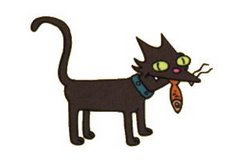No zooplankton! Those microbeads are really spicy don't eat those!
I found out my facial scrub kills small animals! Check the ingredients, if it says "polyethylene" then the exfoliants in it are plastics (if it has some variation of "microbeads" it probably means plastic too), the same plastics used for most consumer products from plastic bags to toys. Little wee plastic beads that are intended to be washed down the drain. They don't get destroyed by disinfecting chemicals and many are too small to be filtered out before they hit ocean. Guess what eats them then? Well, eventually everything, but starting with organisms as small as zooplankton and filterfeeders like krill. Not only do they kill small animals by clogging their digestive systems but plastics like this act as sponges for harmful chemicals like DDT, concentrating these poisons to many many times the levels in the ambient salt water! Woah! But, there are alternatives, many scrubs use natural exfoliants like ground up seeds or shells, coarse sugar or salt. Or you could use a facecloth or a loofah. I hear they make those now. The reason plastic is desirable for companies is because they can easily shape and colour it however they want (like plastic jewelry), they are cheaper to produce, and the gimmick that rounded beads are "gentler" exfoliants than the more angular natural substances is a selling point (like "mild enough to use every day" or whatever). Unfortunately, since they don't directly harm people or large furry animals (just the keystone species' for basically all life on Earth) because they pass throungh larger digestive systems, they aren't seen as a threat. Also, there has been no long term research into their effects (because they haven't been around long enough), and even short term research into these issues is scarce and primarily academic.
plastic too), the same plastics used for most consumer products from plastic bags to toys. Little wee plastic beads that are intended to be washed down the drain. They don't get destroyed by disinfecting chemicals and many are too small to be filtered out before they hit ocean. Guess what eats them then? Well, eventually everything, but starting with organisms as small as zooplankton and filterfeeders like krill. Not only do they kill small animals by clogging their digestive systems but plastics like this act as sponges for harmful chemicals like DDT, concentrating these poisons to many many times the levels in the ambient salt water! Woah! But, there are alternatives, many scrubs use natural exfoliants like ground up seeds or shells, coarse sugar or salt. Or you could use a facecloth or a loofah. I hear they make those now. The reason plastic is desirable for companies is because they can easily shape and colour it however they want (like plastic jewelry), they are cheaper to produce, and the gimmick that rounded beads are "gentler" exfoliants than the more angular natural substances is a selling point (like "mild enough to use every day" or whatever). Unfortunately, since they don't directly harm people or large furry animals (just the keystone species' for basically all life on Earth) because they pass throungh larger digestive systems, they aren't seen as a threat. Also, there has been no long term research into their effects (because they haven't been around long enough), and even short term research into these issues is scarce and primarily academic.
The single issue I had with the book was the very brief mention of domesticated and cultivated species "regressing", which is a half truth and excessive simplification of what could potentially happen (at best). Some species may undergo natural selection for hardier characteristics, but evolution does not go "backwards". These new species may resemble ancestor species in many respects if the environmental influences are similar (like finding a new road to a nearby town) , but corn would not somehow magically become teosinte again. In fact, corn as we know it would go extinct very quickly because it has become so specialized to luring its chosen symbiont species (us) that it cannot breed without our interference (a little "we don't domesticate things, things domesticate us" conspiracy theory). But, anyway, current species will stay the same, become new ones, or go extinct (out competed by other wild species or maybe extant ancestor species if they are still around). Sorry, little rant there.
p.s. If you are interested, this website has ideas for natural and homemade exfoliants and lotions (you have to scroll down a bit).
p.p.s. This article from New Scientist magazine describes a little bit what might happen to plants, animals, and the environment if humans suddenly disappeared.



1 comment:
It's somewhat off topic but basically along the same lines ... have you read Robert Sawyer's Neanderthal Parallax? Yes it's considered a sci-fi trilogy but amazingly well researched. The gist is that a tear has opened up between our universe and a parallel one in which Neanderthals became the dominant species. They are intelligent and have developed higher levels of technology that we have. Anyways, the Neanderthals come to our Earth and have a hard time dealing with how we've screwed up the planet. They live a symbiotic relationship with their earth in which there have not been mass extinctions (mammoths are still alive!), the ozone layer is intact, etc., etc. The palaeoanthropology is amazing (he lists some of his sources) and the physics are mind-blowing! He works theology vs. physics into it as well (re: the God gene). True geek out books. Anyways, thought I'd add that with your post on environmental responsibility and awareness. My mom also recommends "Eco-holic" - not sure who it's by but it gives insight into food production and sustainability in Canada. It's on my "to read because I have nothing else to do until the 25th" list. :)
Post a Comment